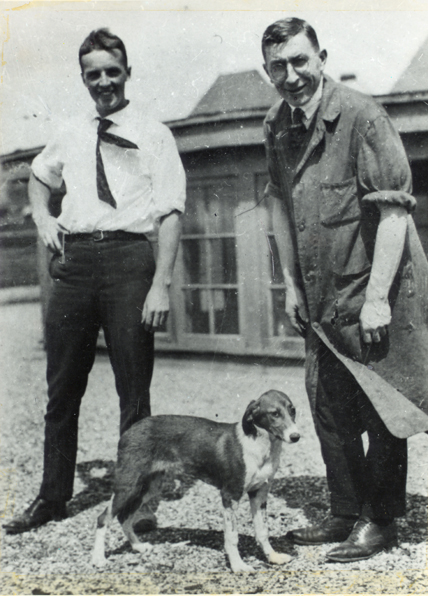The University of Toronto is a major research University offering professional programs in Medicine, Dentistry, Pharmacy, Social Work, Nursing, and Engineering. The Institute for the History and Philosophy of Science and Technology (IHPST) has been active since 1967 and is a graduate studies and research institute offering MA and PhD degrees. The Thomas Fisher Rare Book Library houses the Department of Rare Books and Special Collections including books, manuscripts and other materials; and the University of Toronto Archives and Records Management Services (UTARMS), which holds the official records of the University. The present building was opened in 1973. It is named in honour of Thomas Fisher (1792-1874), who came from Yorkshire to Upper Canada in 1821 and settled by the Humber River. There he operated a grist mill, and played an active role in the public life of the community. In 1973 his great- grandsons, Sidney and Charles Fisher, donated to the Library their own collections of Shakespeare, various twentieth century authors, and the etchings of the seventeenth century Bohemian artist, Wenceslaus Hollar. Since that time the Library has grown to approximately 740,000 volumes and 4000 linear metres of manuscript holdings.
Specialty
Research university; library system with holdings in many areas.
Collections
The collections of the Thomas Fisher Library are many and varied, reflecting the wide diversity of research conducted at the University of Toronto by its own faculty and students, visiting scholars, and the general public. Chronologically, the range is from a 1789 B.C. Babylonian cuneiform tablet from Ur, to original drafts and printed works of contemporary Canadian writers. The great strengths of the Library lie in the fields of the history of science and medicine, British, European, and Canadian literature, philosophy, theology, political science, Hebraica and Judaica, and the art history of the book. Subject strength are further described here, and in our history of science overview and history of medicine overview.
Digitized collections in the history of science and medicine include: Anatomia This collection features approximately 4500 full page plates and other significant illustrations of human anatomy selected from the Jason A. Hannah and Academy of Medicine collections in the history of medicine at the Thomas Fisher Rare Book Library, University of Toronto. Each illustration has been fully indexed using medical subject headings (MeSH), and the plates can also be searched or browsed by artist, engraver, lithographer and printer. There are 92 individual titles represented, ranging in date from 1522 to 1867. The Discovery and Early Development of Insulin This site documents the initial period of the discovery and development of insulin, 1921-1925, by presenting over six thousand page images reproducing original documents ranging from laboratory notebooks and charts, correspondence, writings, and published papers to photographs, awards, clippings, scrapbooks, printed ephemera and realia. Drawing mainly on the Banting, Best and related collections housed at the Thomas Fisher Rare Book Library and the University Archives at the University of Toronto, it also includes significant holdings from the Aventis Pasteur (formerly Connaught) Archives. Fellowships: We currently offer only one fellowship, named the Nicholls Library Fellowship, offered only once every three or four years for a limited term of six months or less, which targets a recent graduate in Library and Information science with an interest in the history of the book.
Collections URL
Holding Highlights
- The Thomas Fisher Rare Book Library, including 740,000 volumes and 4000 linear metres of manuscript holdings
- strengths in history of science and medicine, British, European, and Canadian literature, philosophy, theology, political science, Hebraica and Judaica, and the art history of the book
- Anatomia: Digitized collection in the history of science and medicine, including 92 individual titles printed between 1522 to 1867.
- The Discovery and Early Development of Insulin: over six thousand page images of original documents relating to the discovery and development of insulin, 1921-1925, including laboratory notebooks, charts, correspondence, writings, published papers, photographs, awards, clippings, scrapbooks, printed ephemera, and realia
